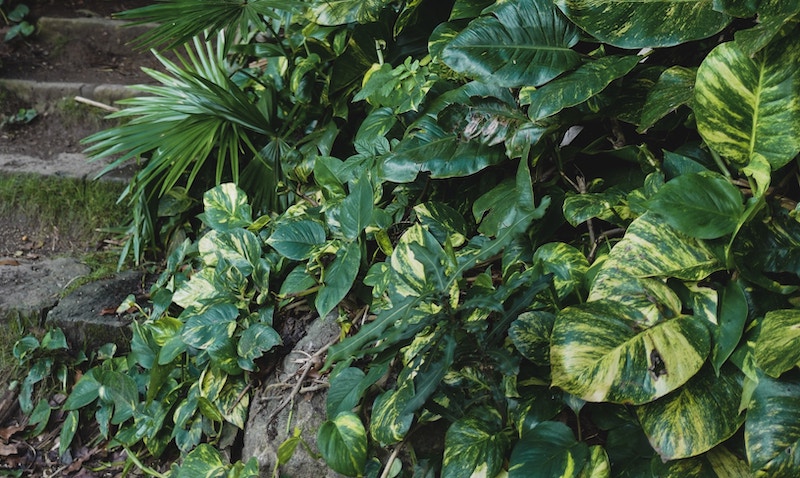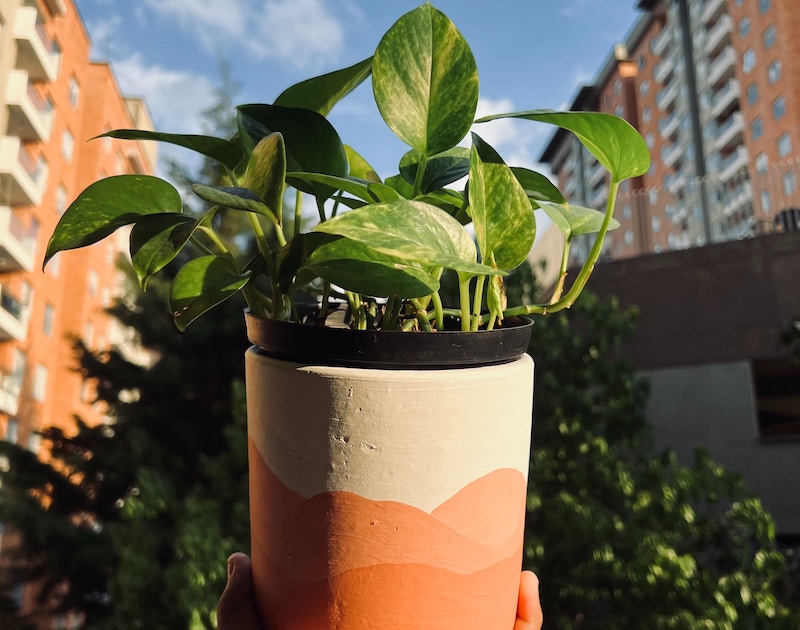In most of the zones of North America, spring marks the start of the growing season outdoors. In-ground outdoor gardening is great for vegetables and landscape plants, but houseplants can also benefit from growing outdoors. Pothos will welcome the extra space, sunlight and humidity. Exposure to wind and rain can help bolster the health of many plants including Pothos. You can also take your Pothos outdoors for repotting, which will avoid spilling messy potting soil in the house.

When To Put Pothos Outside
Pothos are native to the tropical islands of the South Pacific. They do not tolerate temperatures below 40 degrees Fahrenheit / 4 degrees Celsius. Do not move your Pothos outside until overnight temperatures are consistently above 50 degrees Fahrenheit / 10 Celsius. Pothos can survive high heat and humidity and also drier periods as long as it is not in direct sunlight.
When To Bring Pothos Indoors
Pothos does not like cold temperatures and will not want to be outside when the season changes from summer to fall. At the end of summer, keep an eye on the overnight temperatures to make sure there is no threat of frost or cold temperatures. As the overnight temperatures begin to decrease, you should bring your Pothos back inside.
Once you have decided to bring your Pothos inside, it is important to prepare the plant for the transition. Before moving it inside, thoroughly scout for pests. Look underneath foliage and in the soil, and wipe down all leaves and stems. Your plant is ready to bring inside once you have cleaned your Pothos foliage and scouted for pests. Start by moving your Pothos plant into a quarantined holding area for several days to a week to make sure your plant is free of pests and disease. This holding area will also help acclimate your Pothos to the indoor temperature, light levels, and humidity to avoid any shock to the plant.

Caring For Pothos Outdoors
As outlined above, It is important to slowly transition your Pothos into its outdoor location. A slow transition will help to harden off the plant. Move it initially into a more sheltered location, protecting it from sun, wind, and rain. Gradually move the plant into its final location in filtered shade. Do not place your Pothos in a full sun location, which will burn its foliage and overly dry out its soil.
Outdoor plants require more regular watering than indoor houseplants since the soil dries out more quickly from exposure to wind and sun. Be mindful that dark-colored pots can heat up and dry out more quickly than lighter-colored pots. Regularly monitor weather patterns as well as the moisture level of the soil, and water the plant thoroughly when dry. During hot and dry stretches, your outdoor plants might need to be watered daily. Outdoor container plants are also vulnerable to extreme wind and rainstorms; make sure to protect plants and pots from falling over and breaking. Outdoor plants can also be exposed to pests, so plan to regularly look for signs of an infestation. Do not use your plant saucers outdoors since standing water can be a breeding ground for mosquitoes and other insects. Instead, use pot feet or elevated pot stands to help provide adequate drainage for your Pothos.
 |
Author Katie Endicott - Published 6-29-2023 |
